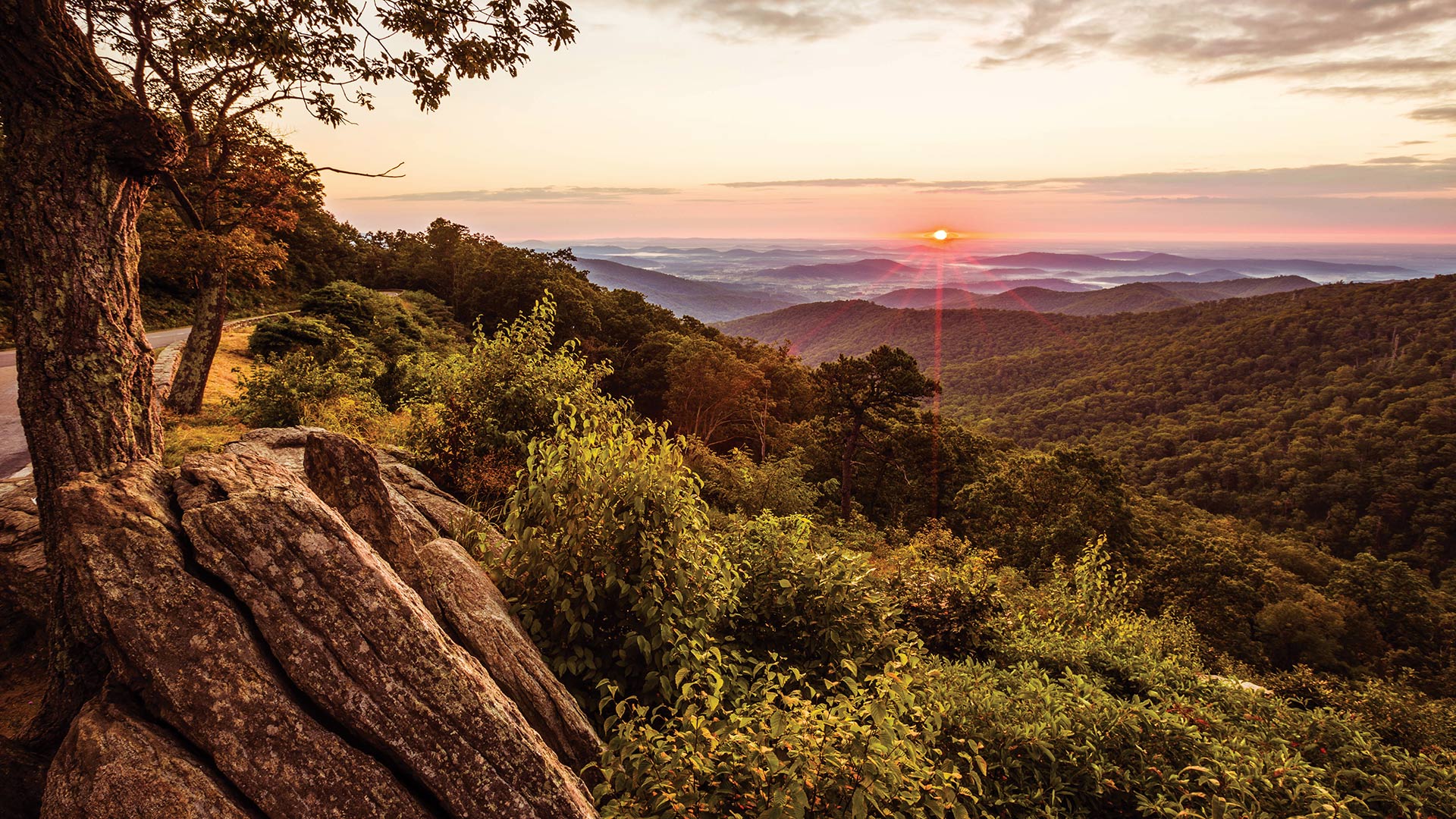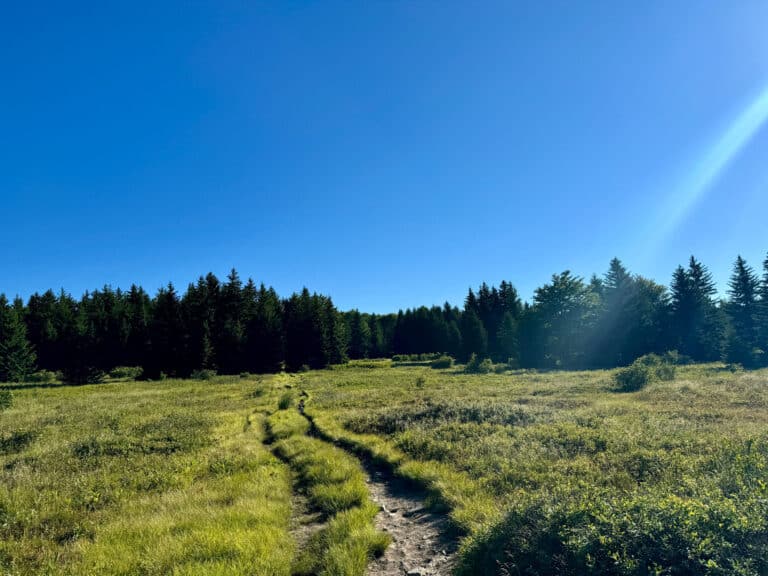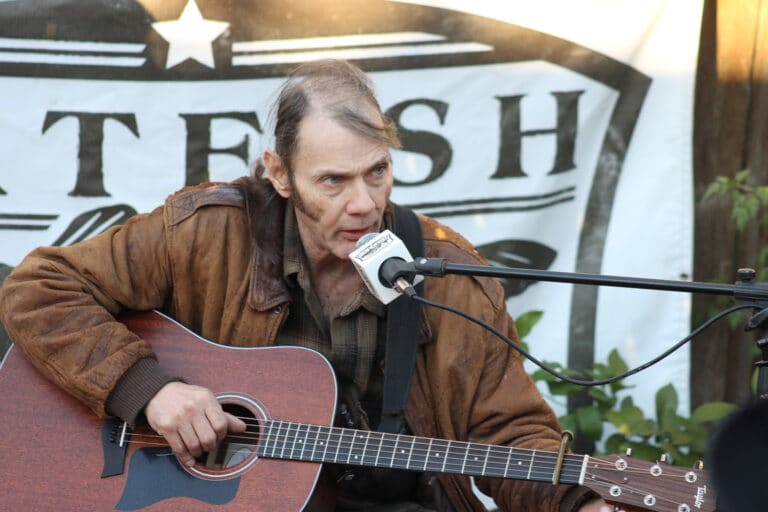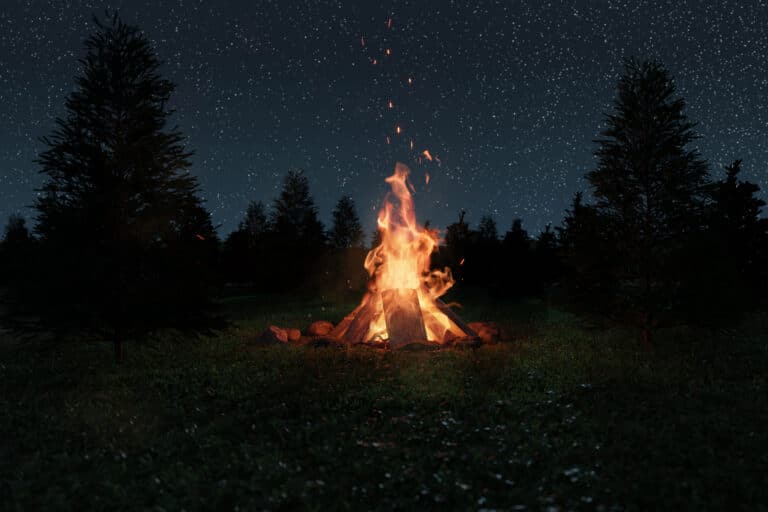A Murder In The Woods: The Mystery Behind a Double Murder in Shenandoah National Park
COLD CASE SOLVED! CLICK HERE TO LEARN MORE!
In May of 1996, Julianne “Julie” Williams and Laura “Lollie” Winans walked into the woods and never came out alive. Their double-murder sparked shock and fear within Shenandoah National Park, where they were murdered at their backcountry campsite, and far beyond, prompting a nation-wide search for their killer.
I was in high school when Julie and Lollie were murdered. If I heard the news as it unfolded, I don’t remember. But a year after their death Bill Bryson’s A Walk in the Woods was published and opened a previously unknown chamber inside of me. At the time, I was just a kid in Ohio who took solace in nature. But in Bryson’s kooky memoir about walking the Appalachian Trail, I found an obsession, enthralled by the idea that one could walk over 2,000 miles without ever leaving the forest. It was in one of the years that followed, as my curiosity about the Appalachian Trail deepened, that I first learned of Julie and Lollie.
Julie and Lollie weren’t hiking the Appalachian Trail when they were murdered, but their bodies were discovered not far from the popular footpath. As I learned more about their lives, I began to see myself reflected in their stories—Julie’s love of travel, Lollie’s belief in the transformative powers of testing oneself in the outdoors. Reading between the lines, I could sense their yearning to find themselves, to build a simple and meaningful life. It was the same desire that drove me to eventually make my home in Western North Carolina, so many years after first feeling the pull of the Appalachian Mountains.
A double murder in Shenandoah National Park
On Sunday May 19, 1996, Julie Williams and Lollie Winans embarked on a backpacking trip in Shenandoah National Park with their golden retriever, Taj.
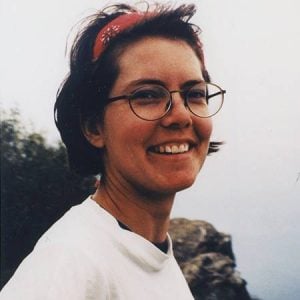
Julie, 24, of St. Cloud, Minnesota and Lollie, 26, of Unity, Maine, pitched their tent off of one of Shenandoah National Park’s horse trails. They chose a peaceful spot next to a mountain stream, which, investigators later noted, may have drowned out the sound of approaching footsteps.
The women had met nearly two years before at Woodswomen, a now-defunct nonprofit organization in Minnesota focusing on education and adventure travel for women. It was there in the isolated lakes of the Boundary Waters and the towering pine forests of northern Minnesota that they connected—two people from very different backgrounds bound by their love of the outdoors.
According to journalist Barry Yeoman in a story for Out, Lollie was a “microbrew-drinking, Phish-following, cigarette-smoking, good-time girl.” She was from a well-to-do family in Michigan but rejected the privilege of her birth. She left home after high school and enrolled in college in Vermont, though she eventually dropped out. A few years later, in 1994, she enrolled in Unity College near Waterville, Maine and began studying to become a wilderness guide. By all accounts Lollie loved the outdoors and wanted to give others the experience of finding themselves in the wilderness, as she had.
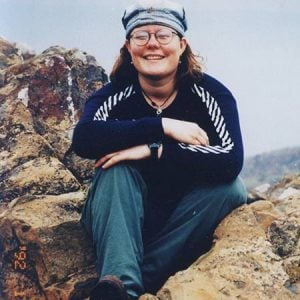
Julie was a geologist in the making, a high-achiever and sports enthusiast who won the Minnesota state double tennis championship in high school and traveled to Europe in college to study the extinction of dinosaurs. She graduated summa cum laude, spoke Spanish, and worked with the disenfranchised, including migrants and people suffering abuse. After college she struck out for Richmond, Vermont and took a job at a bookstore in Burlington. Her future was bright and flourishing. The trip she planned with Lollie in Shenendoah was, in fact, a celebration of a new job that she was set to start in Lake Champlain, Vermont on June 1, 1996.
Instead, that was the day that park rangers found her body.
On May 31, 1996, Thomas Williams, Julie’s father, reported his daughter missing. Park Rangers started a search and located Julie and Lollie’s car just north of Skyland Lodge. “We started doing hasty searches to cover all of those trail corridors in that general area to see if we could locate them,” explains Bridget Bohnet, Deputy Chief Ranger at Shenandoah National Park. “At some point during those hasty searches we did locate the dog.” Taj, the golden retriever, was wandering through the park unleashed.
The next evening, on June 1, 1996, rangers found the bodies of Julie and Lollie at their campsite on Bridal Trail, a part of the horse trail system that runs from Big Meadows to Skyland.
Their wooded campsite was only a quarter mile down the trail from Skyline Drive and a half-mile from Skyland Lodge, a popular gathering place with a bar, restaurant and cabins. It was the weekend after Memorial Day, and the lodge must have been jam-packed with hikers and tourists itching to get a jumpstart on the summer. I’ve stood on the balcony of the lodge myself, sipping a beer and staring out over the Shenandoah Valley as color slowly leaked from the evening sky. It’s unfathomable to think that within a ten-minute hike from this popular location, two women could be bound and gagged and have their throats slashed, and their killer could disappear without a trace. But sometime after May 24, 1996, the date that Julie and Lollie were last seen, that’s exactly what happened.
It also seems nearly impossible that two bodies could lay undiscovered in such a popular part of the park on a busy holiday weekend but, as Bohnet explains, one of the backcountry regulations at the time was that backpackers had to camp away from designated trails, fire roads, and developed areas. “It wasn’t a heavily used or heavily traveled trail,” says Bohnet. “They were following the backcountry regulations at the time which required them to be out of sight.”
Photos left behind in their camera give a glimpse of the last few days of Julie and Lollie’s lives. The women arrived in Shenandoah National Park on May 19, 1996 and launched off into the woods on the Whiteoak Canyon Trail, emerging again a few days later due to rain. According to Yeoman, they hitched a ride with a park ranger and renewed their camping permit before setting out again. They climbed Hawksbill, the highest mountain in Shenandoah, before making camp that night in an idyllic spot next to a stream near the Appalachian Trail.
At some point shortly thereafter, Julie and Lollie’s lives violently ended.
The challenges of solving crimes in National Parks
Scroll through the National Park Service’s list of cold cases and you’ll find that it’s easy to disappear in the woods. There are a number of reasons that people go missing, most of which are attributed to accidental falls or wrong turns. Statistically, when it comes to crime, public lands are incredibly safe. In fact, Julie and Lollie’s murders were the last to happen in Shenandoah National Park.
“We don’t have a lot of crime in the park,” says Sally Hurlbert, Management Specialist at Shenandoah National Park. Hurlbert had just started working at Shenandoah when Julie and Lollie were murdered. “It was very intense,” she remembers. “We were all very scared and worried about it.”
But when a crime does occur in a National Park, the investigation that follows is often more complex than if the crime had occurred off of public land.
“The first step in conducting an investigation in a national park is identifying what the jurisdiction of the land is where the incident occurred,” says Christopher Smith, Special Agent in Charge of Operations for the National Park Service Investigative Services Branch (ISB). The ISB acts as the investigative arm of the National Park Service. They are responsible for investigating crimes that occur in, or affect, the National Parks.
Shenandoah National Park is exclusive federal jurisdiction, which means that only the Federal government has law enforcement authority. “Our law enforcement staff was involved in the initial crime scene security,” explains Bohnet. “We had special agents that are part of the National Park Service handling the investigation in conjunction with the FBI. We also worked with the Virginia State Police’s crime scene unit to have them come and process the crime scene along with the FBI, because at the time we did not have the equipment.”
Aside from the complications that can come from a multi-jurisdictional investigation, investigations can also become problematic due to the nature of crimes on public lands, which often occur outside.
“Several factors make conducting investigations in National Park Service sites challenging,” explains Smith. The first factor is that so many people are coming and going from the park each day. The year that Julie and Lollie were murdered, 1.57 million people visited the park. That kind of transient environment allows the perpetrator to easily slip through park gates unnoticed.
Locating, accessing, collecting and preserving evidence outdoors also make solving crimes on public lands more challenging. “Any type of crime that occurs in an outdoor environment, your crime scene is probably ten times larger than it would be in a residence,” explains Bohnet. “You have the initial crime scene where something happened and then you have the outer crime scene because you don’t know which way the person came in or went. So the crime scene in and of itself tends to be larger and harder to contain and process.”
Another factor is that the discovery of the crime may be delayed because of the remoteness or solitude of its location. “We had that problem with Lollie and Julie’s case,” says Bohnet. “We had to find them first. It’s like finding a needle in a haystack.”
In the years that followed the discovery of the women’s bodies, the National Park Service and the FBI joined forces to conduct a nationwide search for their killer, including following up on an estimated 15,000 leads.
For over a year, nothing happened. Until one day in July 1997 when the tranquility of Shenandoah National Park was shattered once again.
A suspect emerges
Shenandoah’s Skyline Drive is a popular place for a bike ride and in July 1997, that’s what Yvonne Malbasha, a tourist from Canada, had come to do. As she pedaled the mountainous road, admiring the Blue Ridge views, Malbasha was forced off the road and off her bike by a man driving a truck. He screamed sexual profanities at her as he stepped from his vehicle, enraged, and tried to force her inside. Malbasha was able to fight him off and took cover behind a tree as the man reentered his truck and tried numerous times to run her over. He eventually gave up and sped away, and rangers apprehended him as he was attempting to leave the park. Later, when investigators searched his vehicle they found hand and leg restraints hidden inside.
Not much is known about the attacker, Darrell David Rice. At the time of Malbasha’s attack he was in his late twenties and living in Columbia, Maryland, a single guy with no kids. Although he had no previous criminal record, reporting done by The Hook, a now-shuttered weekly newspaper out of Charlottesville, Virginia, states that Rice was fired from his job at Maryland’s MCI Systemhouse in June 1997 because he was extremely hostile at work. Rice’s former co-workers told investigators that he yelled sexual and other profanities at them, punched a hole in the wall of the men’s bathroom, stole their lunches, bumped into them so that they’d spill their coffee and took down one woman’s picture and threw it in the trash.
In 1998, Darrell David Rice pled guilty to the attempted abduction of Malbasha. He was sentenced to 135 months in a Petersburg, Virginia federal penitentiary. Interviews after his arrest led prosecutors to believe Rice may have been involved with Julie and Lollie’s murders. The Hook reports that prosecution documents stated: “Rice became a possible suspect for a variety of reasons, including the obvious parallels in geographic location, the predatory behavior exhibited, and the exclusive selection of female victims.” The Hook also claims that Rice “was videotaped entering the park at Front Royal at 8:05pm on May 25, and again at Rockfish Gap at 4:57pm on May 26. He returned with his friends Caryl and Robert Ruckert on June 1.” Rice denied that he was in the park on May 25 and May 26 but did admit that he was there on June 1.
With circumstantial evidence in hand, on April 10, 2001, nearly five years after their deaths, Attorney General John Ashcroft announced the indictment of Darrell David Rice in the murder of Julie Williams and Lollie Winans.
Julie and Lollie were lovers, a fact that threatened to steal headlines in 1996. In a news conference announcing Rice’s indictment, prosecutors alleged that, “Rice has stated on several occasions that he enjoys assaulting women because they are, in his words, quote, ‘more vulnerable,’ close quote, than men.” Additionally, prosecutors stated that Rice said the women deserved to die because they were gay.
Rice was charged with four counts of capital murder, two of which alleged he selected his victims because of their sexual orientation. Because Rice was charged with a hate crime, his indictment invoked a federal sentencing enhancement. If convicted, Rice could receive the death penalty.
But he was never sentenced.
Though prosecutors spent years building the case against Rice, they lacked forensic evidence. Then, in 2003, a hair found at the crime scene was tested. DNA results indicated that it did not match Rice or the victims. After that, the case fell apart. In 2004 the charges against Darrell David Rice were dismissed “without prejudice,” meaning he could still be charged at a later date.
Because the murder of Julie and Lollie is still an active investigation, the FBI will not discuss persons of interest. No one has been convicted of the murders, and Rice was released from prison in 2011. The last reported sighting of Rice was in 2014 when police in Durango, Colorado began receiving calls from frightened residents saying they’d seen him in the area. Durango Police Chief Jim Spratlen said people were overreacting, adding, “all I know is he’s not wanted, and we ain’t looking for him.”
Still waiting for answers
Last year, around the twentieth anniversary of Julie and Lollie’s murders, the FBI circulated a press release and updated posters. “The case remains an open and active investigation,” says Dee Rybiski of the FBI. “It’s our hope that any continued coverage of the girls’ murders will one day generate that one crucial piece of information that may bring someone to justice and peace for their families.”
Today, Julie and Lollie would be 45 and 47 years old. And while time marches on, the women are still remembered by their loved ones, the FBI, and the old timers at Shenandoah who were working in the park all those years ago. “When I found out that they were geologists, that hit me because I’m a geologist,” remembers Hurlbert. “I felt bad knowing that they were out having a good time, looking at the rocks, enjoying themselves and then something horrible like that happened.”
“I was a very young ranger at the time and it affected my career. Before that, I may not have taken the law enforcement part of my job as seriously as I do now. I was a backcountry seasonal, you know? I was having a blast,” says Bohnet. “I didn’t think about people getting murdered in the park. I changed the way I thought about things after that. I changed the way I trained for things. I changed a lot of stuff about how I did my job. It had a profound effect on me and I know it did on the people who worked that case.”
Over two decades have passed since Julie and Lollie were killed in Shenandoah National Park. The shock of their murders is now just a shadow on an otherwise peaceful recreational paradise that I, like many others, will return to again and again. But the next time I climb Old Rag, or stargaze at Big Meadows, I will remember Julie and Lollie, two lives cut short while enjoying a place that so many of us love.
If you have any information concerning the murder of Julianne “Julie” Williams or Laura “Lollie” Winans, please contact the FBI-Richmond Division at (804) 261-1044.
